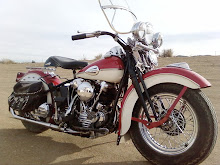The laser on my compound miter saw is basically a marketing gimmick that looks neat at the store. In the real world however, it is not bright enough to see in daylight. When cutting the cheap plastic trim they get covered up with the bits of melted plastic that come off the blade due to the fact that it is inline with the blade. Then when you clean it off a few times, you end up making the line fuzzy.
I don't know about you, but when I want an accurate cut (when would you want an inaccurate cut?) I always look down the edge of my blade to my mark. If I want firewood, I'll use a different saw.
So, what is that laser thing anyway? Simply put, it is a diode. Normal operating voltage is 3vdc. Now the fun stuff! A nice, bright white LED (also a diode) normally also uses an operating voltage of 3vdc. See where I'm going with this?
How many times have you still been working when the sun is going down, almost done with a job and your marks are getting pretty hard to see? Would it not make more sense to have that useless laser shining some light to see by instead of a fuzzy red line that you don't use? Do I only ask questions that only have one obvious answer?
Most saws are different of course, but as far as the laser goes they are usually tacked on like an afterthought. That makes things a bit easier to change without having to resort to performing major surgery on your saw. Note: To be on the safe side, remove the laser from your saw and check exactly how much voltage is going to the laser, then choose an LED flashlight that uses the appropriate number of batteries. For AAA, AA, C and D batteries, one battery = 1.5vdc; two batteries = 3vdc; three batteries = 4.5vdc.
In this example we'll use 3vdc. First, look around for an old LED flashlight that uses 3vdc (two AAA batteries for instance) and a single bright LED. A multi LED may require more work to put it into a small space. You can get a lot of light with a single LED if you want to. I have a 3w LED in my Mag-lite that would be too bright for this purpose! That bulb also cost me about $20!
A few notes:
1) LED's won't work if the pos. and neg. are reversed; if it won't light up, switch the + and -.
2) If the LED flashlight you took apart uses a small circuit board, use it. These are from the better flashlights and that little board makes the LED almost twice as bright. Don't ask me how, though.
3) Always use a housing and a lens to keep the components clean. Put shrink tubing over bare wires and make sure the blade won't hit if you didn't keep it small.
Now with a few hours of goofing off in the garage and using up a few of those bits and pieces that have gotten tossed into the "bucket of everything" we keep for no other reason than 'ya never know when I might need one of these!', you can take something that is useless and replace it with something that's useful!
Hmm, where else can I use some LED's? Tool box? Belt buckle?
~SJN
Subscribe to:
Post Comments (Atom)

No comments:
Post a Comment